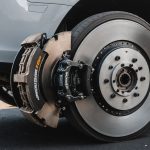As the world grapples with climate change, the impact of our daily activities becomes increasingly evident. For UK drivers, the emissions produced by vehicles represent a significant portion of carbon footprints. Many individuals assume that the only way to address this issue is through the purchase of an electric or hybrid vehicle, but that’s not the only solution. In fact, there are numerous strategies you can implement today to reduce your car’s carbon footprint without needing to invest in a new car. This article will explore practical methods that drivers can adopt to contribute to a greener planet while still enjoying the benefits of their current vehicles.
Understanding Carbon Emissions from Vehicles
To effectively reduce your vehicle’s carbon footprint, it is essential to understand how emissions are produced. When you drive a car, especially those powered by traditional fossil fuels, the engine burns fuel to create energy. This process releases carbon dioxide (CO2) and other harmful gases into the air. The average car emits about 120-150 grams of CO2 per kilometer driven. As drivers, being aware of these numbers can provide a baseline for change.
This might interest you : What are the advantages of choosing a certified pre-owned vehicle in the UK?
You should also consider the type of fuel your vehicle uses. Gasoline and diesel engines produce different levels of emissions, with diesel often producing higher amounts of nitrogen oxide. While switching fuels might seem daunting, there are various ways to optimize your current vehicle’s fuel usage. Regular engine maintenance, for instance, can enhance efficiency and reduce emissions. A well-tuned engine burns fuel more effectively, translating into lower emissions.
Moreover, driving style significantly affects your vehicle’s impact on the environment. Aggressive acceleration and hard braking can increase fuel consumption and emissions. By adopting a smoother driving style, you can potentially reduce your fuel consumption by 15% or more. Furthermore, understanding how weight and drag affect fuel efficiency can lead to smarter driving decisions. Keeping unnecessary items out of your trunk and maintaining proper tire pressure can also aid in reducing your vehicle’s footprint. In essence, by being mindful of how your car operates, you can take significant steps to limit its environmental impact.
Topic to read : How do manufacturer warranties differ for vehicles sold in the UK?
Adopting Eco-Friendly Driving Practices
Transitioning to eco-friendly driving practices can significantly minimize your vehicle’s emissions. Simple adjustments to your driving habits can lead to substantial improvements in fuel efficiency. For example, maintaining a steady speed and utilizing cruise control on highways can help you save fuel. When you accelerate rapidly or drive at high speeds, your engine works harder, which results in higher fuel consumption and increased emissions.
You can also consider carpooling or ridesharing options. By sharing rides with others, you effectively reduce the number of vehicles on the road and consequently decrease the collective emissions. If carpooling isn’t feasible, public transport may serve as a viable alternative, reducing your reliance on personal vehicles altogether.
Another effective strategy is to limit short trips. Short journeys often result in higher emissions as engines operate less efficiently when cold. Combining errands into one trip can decrease the frequency of cold starts, thereby reducing your overall emissions. Additionally, planning your routes to avoid traffic congestion can save time and fuel, further cutting down on your vehicle’s carbon output.
Finally, consider keeping your windows closed at higher speeds. Open windows create drag, which forces your engine to work harder. This adjustment can enhance your vehicle’s aerodynamic efficiency, leading to lower fuel consumption and, thus, reduced emissions. In summary, adopting these eco-friendly driving practices can markedly lower your car’s environmental footprint without necessitating the purchase of a new vehicle.
Regular Maintenance for Maximum Efficiency
Maintaining your vehicle in optimal condition is a crucial step to ensuring it operates efficiently and produces fewer emissions. Regular maintenance checks can help identify potential issues before they escalate, saving you money on repairs while also reducing your car’s carbon footprint.
One of the most significant aspects of vehicle maintenance is ensuring your engine is running smoothly. Regular oil changes are essential, as clean oil reduces friction and keeps the engine working efficiently. A well-maintained engine will burn fuel more efficiently, leading to lower emissions.
Equally important is the condition of your tires. Worn or improperly inflated tires can significantly reduce fuel efficiency. It’s advisable to check your tire pressure regularly and replace tires as needed. Ensuring that your tires are in good shape not only enhances safety but also improves fuel economy.
Moreover, replacing air filters and spark plugs on schedule can contribute to better engine performance. A clean air filter allows for better airflow, while new spark plugs ensure that fuel is burned efficiently. Together, these small acts of maintenance can lead to noticeable reductions in emissions.
Finally, keep in mind that the overall weight of your vehicle affects its efficiency. Remove unnecessary items from your car to help lighten the load. Every little bit helps when it comes to reducing the carbon footprint of your vehicle. Committing to regular maintenance is a proactive way to ensure your vehicle operates as cleanly and efficiently as possible.
Utilizing Technology and Apps for Sustainable Driving
In today’s digital age, technology offers various resources that can help you reduce your vehicle’s carbon footprint. Numerous apps are designed to promote eco-driving and monitor fuel consumption. These applications can track your driving habits, provide feedback, and suggest improvements to enhance fuel efficiency.
For instance, some apps can analyze your driving patterns, helping you identify aggressive driving behaviors that lead to higher fuel consumption. By understanding how your driving style impacts emissions, you can make conscious adjustments that lead to more sustainable driving.
Additionally, GPS navigation apps can help you avoid traffic and find the most efficient routes to your destination. These tools minimize idle time in traffic, which is a significant contributor to emissions. Choosing the quickest route not only saves time but also reduces the overall fuel consumption of your vehicle.
Many apps also provide information on nearby charging stations for electric vehicles. If you own a hybrid or electric vehicle, knowing where to charge can optimize your energy use and further reduce your carbon footprint. Furthermore, there are platforms that connect drivers for carpooling. Utilizing such services can decrease the number of vehicles on the road, thus contributing to lower overall emissions.
In summary, leveraging technology can play a vital role in your efforts to mitigate your vehicle’s environmental impact. By adopting smart driving habits and utilizing available resources, you can make a significant difference without needing to purchase a new car.
Reducing your vehicle’s carbon footprint is a pressing concern for many UK drivers, especially as societal awareness of environmental issues grows. Fortunately, there are numerous strategies you can deploy without needing to invest in a new car. From understanding your vehicle’s emissions to adopting eco-friendly driving practices and ensuring regular maintenance, every action counts. By implementing these tips, you are not only helping to protect the environment but also potentially saving money on fuel costs. Embrace these changes and contribute to a sustainable future, one journey at a time.











